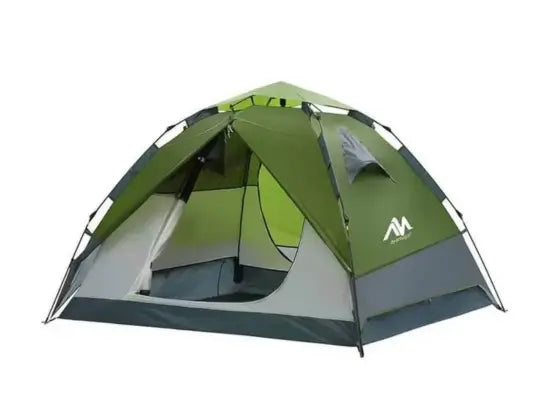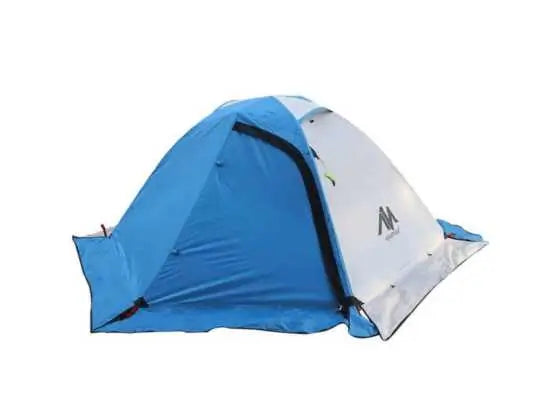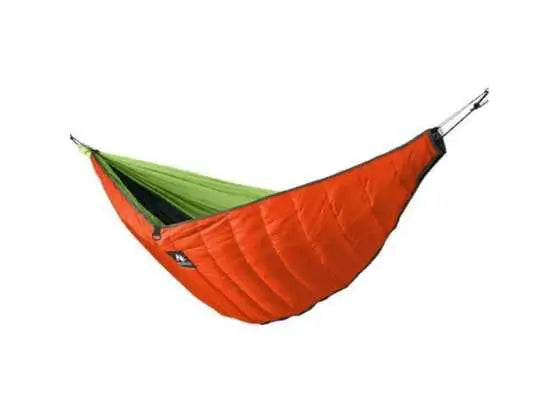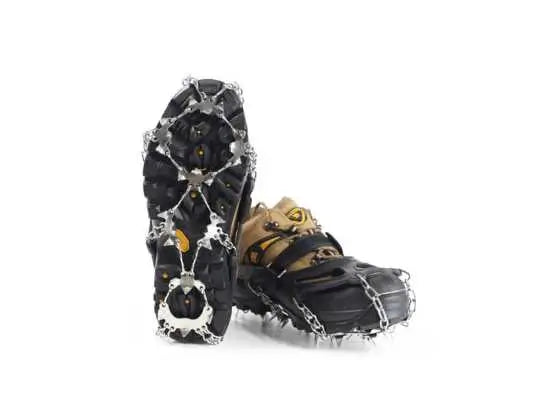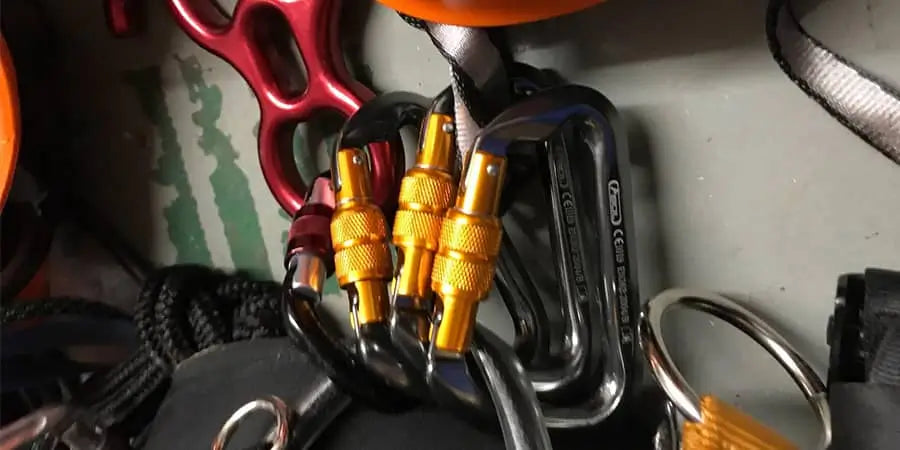Caring for your carabiners
Safety is the lead consideration in every situation. A seasoned climber will be careful with the health of carabiners to assure safety. How do you care for your carabiners? Of course, there are vital tips that will help you have better care for your carabiners. Regular inspection and maintenance are the necessary practices to enhance safety.
The safety maintenance that you give to your carabiners will accord it the longevity that you dearly need. It can last for more than 15 years, though some climbers will choose to get new carabiners even when not necessary. Retiring your old carabiners won’t be necessary if you are keen on maintenance. Improper care of carabiners will force you to retire it even before five years’ elapses. It is worthless to wait until the irreversible problems chirp in! Check the tips below to guide you have better care of your carabiners.
How will you tell if your Carabiner needs maintenance?
If you have been continually maintaining your carabiners, you may not get a chance to understand the symptoms that you should be checking to diagnose a problem. Here are the lead symptoms that you should check:
- When you have been in places that expose your carabiners and gears in a salty environment. Salt or any form of chemical will damage your Carabiner.
- Be checking the gate of the Carabiner. Sometimes, it gets hard to open; you begin experiencing challenges opening it unlike before.
- You will notice some small burrs.
- If sand and grit start getting in the gates of the carabiners. You will realize this when you begin experiencing some grinding noise in your Carabiner.
The symptoms above may not necessarily be common. If all miss out, then you have no reason to do maintenance!
Carabiner Inspection is necessary for pinpointing the errors above
Here are the tips that will guide you to do a thorough inspection of your Carabiner:
- Check the rivets; be sure that none of them is bent or missing
- Inspect the surfaces of the Carabiner. You should be keen to pinpoint the cracks, sharp edges, any form of corrosion, burrs and any other form of wear and tear. Any small crack will impact the strength of the Carabiner.
- You should check the gates of carabiners before you begin any adventure. The gate should open and close quickly and effectively. If you experience any issues, you don’t have to think about using it because it may interfere with your safety.
- If you have dropped your carabiners for long distances, it will be better to retire them. It may appear healthy; but with long time use and dropping, it will experience significant damage. Though in your eyes you will think it is still intact.
How to thoroughly clean your carabiners?
Cleaning a Carabiner is not as easy as it is said. There are prudent cleaning tips that you must master for best performance.
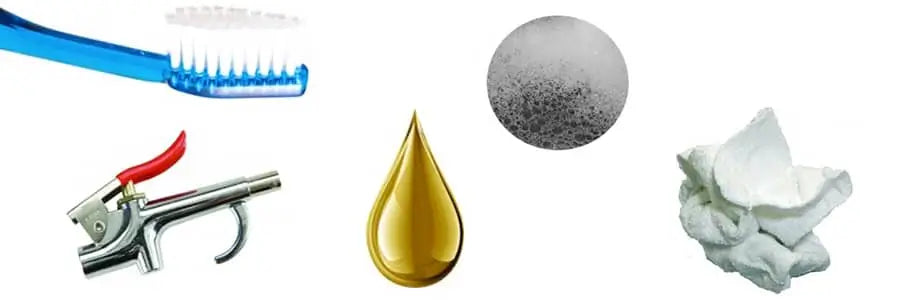
Check if you have the following tools for cleaning:
- Hot soapy water with no traces of bleach, grease or chlorine
- A toothbrush, or any effective brush that can do the work
- You need compressed air; it can be canned air, an air dryer or any other form
- A lubricant
- A rag
The number 2 cleaning step is soaking and scrubbing
Every tool will have a function. Clean your Carabiner in hot soapy water.
- Scrubbing should be intense around the gate, rivets and springs.
- Soak the Carabiner for at least 20 minutes to effectively loosen the dirt
- Use hot water for the best results. It should not be necessary as hot to burn your hands. Make sure that it attains the temperatures that will allow you to handle them.
- You must not boil the Carabiner in water.
The third step is to burst the compressed air in the holes. Compressed air is responsible for getting rid of particles and drying them. You will then lubricate the Carabiner when you are sure that it is completely dry. Lubrication should be procedural. Start from the gates, the springs, and the lock area. Do not leave any excessive lubricants in the Carabiner. Wipe them off.
You can use room temperature lubricants for best results. You should use a minimal amount of lubricants to avoid any buildup, waste and extra work.
Burr Removal
Burr removal is an important practice that will protect your rope. Burrs can damage your rope. You need to learn the tips on how to sand down the burrs. Sandpaper (grade 220 to 400) can be an effective tool to remove the burrs. You do not need to file the Carabiner because filing may damage it.
Storage
Everything needs storage; a Carabiner is not an exception. When storing your carabiners, be sure that your Carabiner sits in a place far from the corrosive chemicals. Humidity and salty environs are also not good for your Carabiner. Your climbing gear should stay away from high humid conditions. The place should be cool and dry, for it to last. The safest place to store a Carabiner is in a closet, sunny windows or any place that is isolated from significant temperature swings.
When to Retire Your Carabiner
At some point in time, it becomes necessary to retire your Carabiner. Here are the things that will signal you that it is time to retire your Carabiner.
- If the gate will not function properly after maintenance.
You may have struggled with maintenance, but the gate or the locking mechanism remains locked or sticky. Sometimes, it won’t be opening and closing consistently. Imperfect locking will happen when dirt or sand gets into the rivets. You may opt to clean t for the second time with soapy water. If the Carabiner begins giving you problems and it's barely a year of use, you will be doing well if you contact the manufacturer. Experiencing problems in the first year is a sufficient reason to confirm to you that it is not worth it.
- In instances of significant wearing that results in deep grooves, sharp edges and burrs.
The problem may result from rope wear or contact with bolts that will wear out the rope. You should be checking these issues on the rappel carabiners and eh anchor carabiners. If you have been climbing hard routes, you won’t miss such cases. If your climbing entails falling and climbing, the rope may experience wear and tear, and it gets devastating, then you should consider retiring your Carabiner.
- If the carabiners body, gate or other areas gets deformed, bent or elongated
A misuse will damage your Carabiner. If you are fond of cross loading, it will elongate the body of your Carabiner. An elongation will not allow the Carabiner to close. It weakens and may no longer be a better structural position to work.
- If there are cracks on the gate and the body
If you notice any crack on your Carabiner, you should retire immediately because such tears are not often common. Do not mistake a crack for light scratches. Older carabiners will have scratches, but a crack is devastating and will call for immediate retirement.
- Instances where rivets loosen
Rivets are important features of a Carabiner. When it starts deforming, it is signaling that it is time for your Carabiner to retire. Any rivet that won’t work may pose a danger to you. You are not ready to suffer this incident, that is why you should not hesitate to retire them.
- Fire survival
Instances of fire may break out, and among the things, you will want to save are the carabiners. You should notice that temperatures are high during fire breakouts, and if your carabiners are exposed to fire, it structural damages your Carabiner. It may look intact in the eye, but you don’t want to risk knowing that its structure may have been altered.
- Constant exposure to seawater
A single splash of seawater will not damage the Carabiner provided that you are careful with the maintenance practices. If you are leaving the ropes in a seawater cliff for a repeated climbing, it may imply that you are exposing your Carabiner to extreme salty conditions. It will lead to corrosion and alteration of the structure. It may not be safe to prolong the use of such carabiners.
- Retire it if it ever gets comes in contact with battery acid, fuel and any other corrosive material,
Battery acids are corrosive and will eat away the carabiners. Any contact with acid will corrode it. Don’t assume that that the contact was less aggressive, and you start using the Carabiner. It will eat the rivets and pins and eventually the body, and before you know it, you will be in for an accident. You should store the Carabiner in places where there are no chemical fumes or chemical spills. It is not about wiping instantly, but the reaction that occurs when it gets in contact with such chemicals. The results may be devastating.
Many people find retiring the old carabiners uneconomical, but you will need to do it for safety. More often, the carabiners will last for long provided that you have been careful with maintenance. You can return to the manufacturer if the retirement symptoms arrive earlier than one year.
Final Life-Prolonging Carabiner Tips
To conclude, you should know these few life-prolonging tips for your Carabiner. First, the rope should remain clean. Do not ignore any form of dirt, because ropes will easily pick the dirt. When it has dirt, it can be worn off the grooves and decreases the lifetime of your Carabiner.
Frequent inspection on the rivets, bolts and lubrication. Check the carabiners on the bolt side for burrs more often. The bolt carabiners will develop burrs faster and therefore the need for frequent checking.

